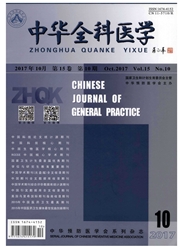

 中文摘要:
中文摘要:
目的 观察加巴喷丁(GBP)对糖尿病神经痛(PDN)大鼠皮肤机械痛敏和脊髓谷氨酸(Glu)含量及下丘脑c-Jun氨基末端蛋白激酶(JNK)的动态表达,探讨GBP在PDN治疗方面的作用机制。方法 制作链脲佐菌素(STZ)PDN大鼠模型。随机分为对照组、PDN组和GBP组。GBP组给予GBP干预,1次/d,按100 mg/kg,连续14d,灌胃给药。对照组大鼠不做任何处理,实验期间各组大鼠均隔天测定机械痛阈一次。实验结束后采用OPA柱前衍生高效液相色谱法测定各组大鼠L5-DRG,L6-DRG和脊髓组织及脊髓微透析液中Glu含量,免疫组化SP法观察大鼠下丘脑JNK动态表达。结果 实验观察期内GBP组痛觉阈值稳中有升,PDN组痛觉阈值呈现进行性下降,较GBP组差异有统计学意义(P〈0.05)。Glu在各实验组大鼠L5-DRG、L6-DRG、脊髓组织和脊髓微透析液中含量不同,GBP组脊髓组织和脊髓微透析液中Glu含量低于PDN组(P〈0.01);L5-DRG,L6-DRG中Glu含量高于PDN组(P〈0.05)。JNK在PDN组大鼠下丘脑视上核、室周核和弓状核的表达量均高于GBP组(P〈0.05),也高于对照组(P〈0.01)。结论 GBP具有减轻PDN大鼠皮肤机械痛敏的作用,其作用机制可能与抑制脊髓兴奋性氨基酸神经递质Glu的释放及下丘脑JNK的动态表达密切相关。
 英文摘要:
英文摘要:
Objective To investigate the effect of gabapentin (GBP) on mechanical hyperalgesia; glutamic acid (Glu) expression of spinal cord, c-Jun N-terminal protein kinase(JNK) expression in hypothalamus in rats model of painful diabetic neuropathy(PDN). Methods PDN rats model induced by streptozotocin (STZ)were divided into control group, PDN group and GBP group randomly. The GBP group rats were injected intraperitoneally with GBP( 100 mg/kg) s. i. d for 14 d;the control group did not receive any treatment. The mechanical withdrawal threshold was measured every other day. When the experiment was finished, Glu expressedin L5-DRG, L6-DRG and spinal cord were detected by pre column derivatization with o-Phthaldialdehyde(OPA) high performance liquid chromatography, and JNK expressed in hypothalamus were detected by immunohistochemical SP method. Results The mechanical withdrawal threshold presented the progres- sive decrease in PDN group and which was stable and on the rise in GBP group, the mechanical withdrawal threshold in GBP group was significantly higher than that in PDN group( P 〈 0.05 ), Glu was expressed in Ls-DRG, L6-DRG spinal cord tissue and spinal microdialysates. In GBP group, the level of Glu in spinal cord tissue and spinal microdialysates were extremely significant lower than that in PDN group(P 〈0.01 ) ,but the levels of Glu in Ls-DRG and L6-DRG were significant higher than thatin PDN group(P 〈0.05). The immunoreaction positive products of JNK were distributed in rats nucleus hypothalamic supraoptic, nucleus mammillary lateral and nucleus arcuatus. In PDN group, the expression of JNK in nucleus hypothalamic supraoptic, periventricular nucleus and nucleus arcuatus were significant higher than that in GBP group (P 〈 0.05 ) and extremely significant higher than that in control group (P 〈 O. O1 ). Conclusion GBP can effective- ly alleviate the mechanical hyperalgesia induced by PDN. The mechanism of GBP action may closely related to the release inhibitio
 同期刊论文项目
同期刊论文项目
 同项目期刊论文
同项目期刊论文
 期刊信息
期刊信息
